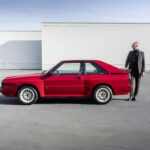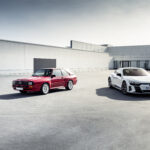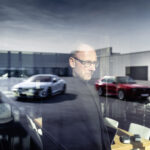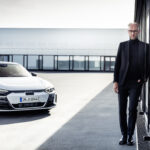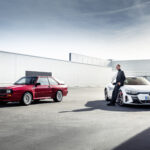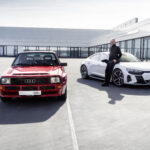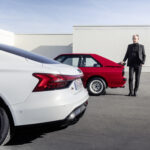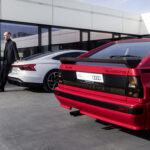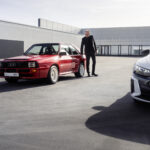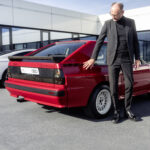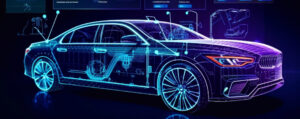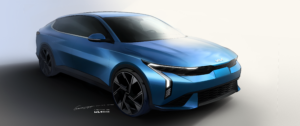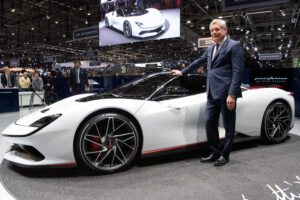Interview with Audi Design’s Marc Lichte: “Sporty cars are adrenaline that has assumed a shape”
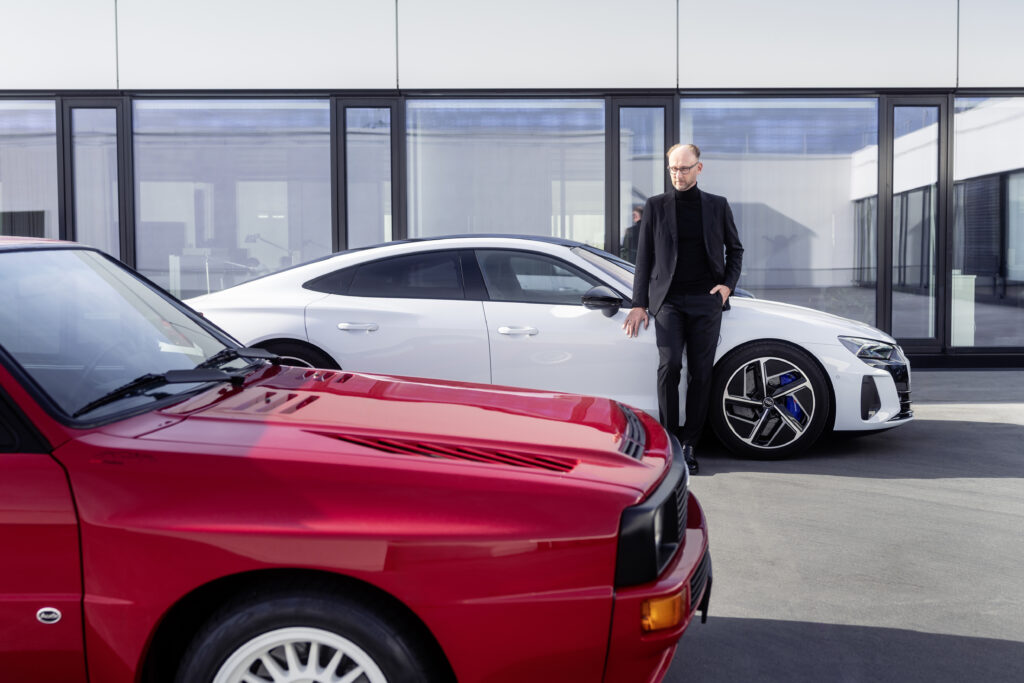
When innovation turns into a tradition: Audi Sport quattro and Audi RS e-tron GT
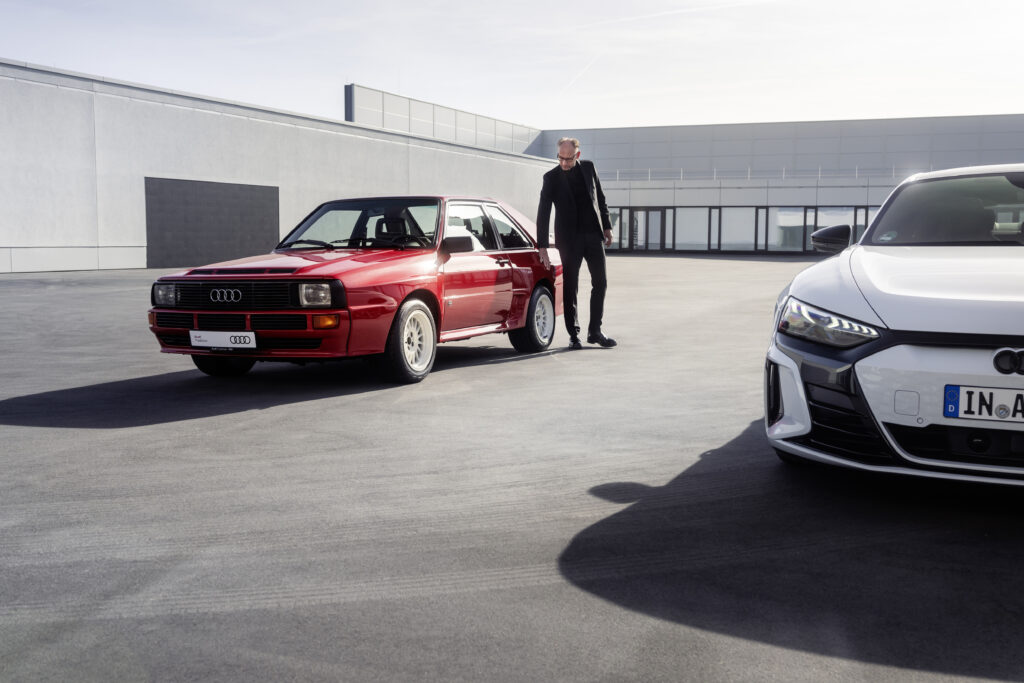
Audi RS models thrill fans of the four rings thanks to their advantage in technology and styling. On the occasion of Audi Sport GmbH’s 40th anniversary, Head of Audi Design Marc Lichte recalls innovations that have turned into traditions – and that continue to be sources of inspiration.
Marc, Audi Sport GmbH has now been in existence for 40 years, thrilling fans with RS models. Which of its models particularly fascinate you?
Marc Lichte: As a designer and as a performance enthusiast I’m a huge fan of our RS models. The TT RS2 always used to be one of my highlights because, like the production TT base model, it was the first to put the ideas of the Bauhaus art school on the road. Although “less is more” applies to its design language, it does not when it comes to the sheer emotions and joy of driving the car evokes – ensured, not least, by its five-cylinder engine with its special sound. Work on the current Audi RS 6 Avant3 with my team was an unforgettable experience as well. At the time, we uncompromisingly carved the quattro origins into every detail and into every line. Anytime I spot an RS6 on the road today I’m happy to see how consistently we pursued our concept back then.
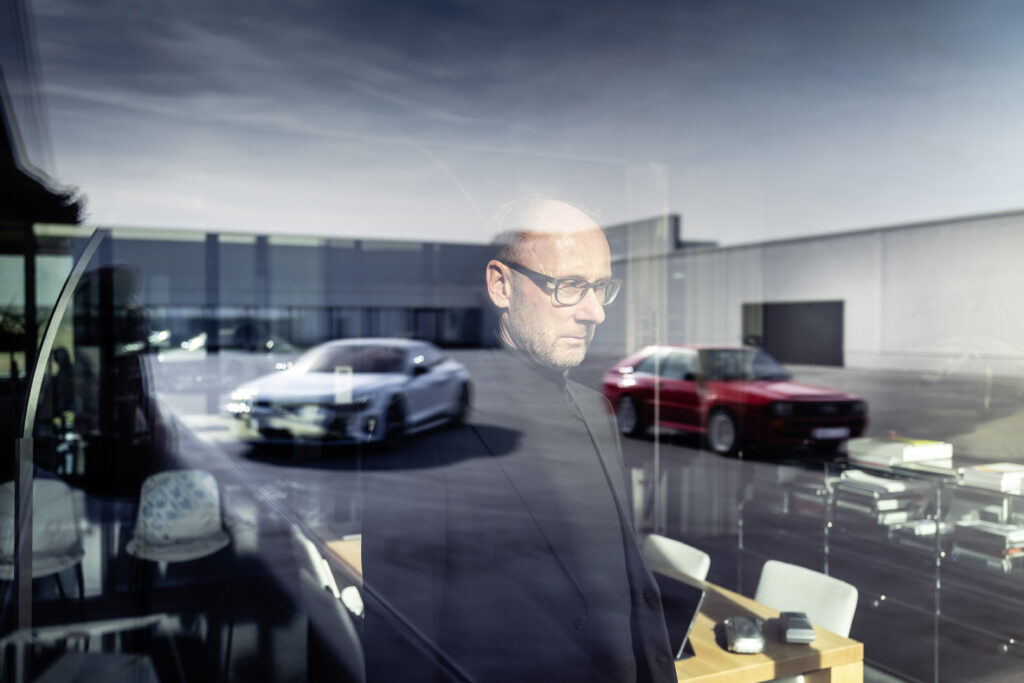
Something that all RS models share?
Lichte: For me, what’s truly unique is that the form of Audi legends like the original quattro or Sport quattro, i.e., the muscles, the blisters, the extra wide fender flares, can be found on every current – and I can promise that – will be found on every future RS model. The RS design is so deeply anchored in Audi’s DNA that we could keep reinventing it without ever diluting its essence.
The genes for Audi Sport’s success stem from racing: sportiness, cutting-edge technology, and emotional design. Where does your passion for performance cars come from?
Lichte: How closely cars are related to passion is something I learned early in life from my dad. In the 1970s, he competed in hill-climb races every other weekend. Before the race weekends that very special thrill could be felt around the whole house as though the starting line was about to be given the green light any minute. Ever since those days, sporty cars for me have represented anticipatory excitement galore, adrenaline that has been cast in a mold, that has assumed a shape.
Is it true that the Audi Sport quattro really triggered your career wish to become an automobile designer at Audi?
Lichte: Yes, that’s right. In 1983, the Audi Sport quattro from Audi stood out from the crowd at the Frankfurt International Motor Show like no other car. It was generally totally different from anything I’d seen so far. This car had an incredible amount of character – with its wide bodywork, with its blisters. Such consistency was awesome! The idea to express automotive sportiness in that way, to use styling to make technology so dramatically visible to everyone, and immediately accessible by everyone as a result. That idea inspired me so much that while I was still at the booth of the motor show, I decided that I’d like to become a designer at Audi later in life! That was exactly forty years ago. For me it’s been a twofold success that the styling elements of that icon – the expressive C pillar, the distinctive air scoops, simply the entire progressiveness of that Audi – have been accompanying me in my work to this day.
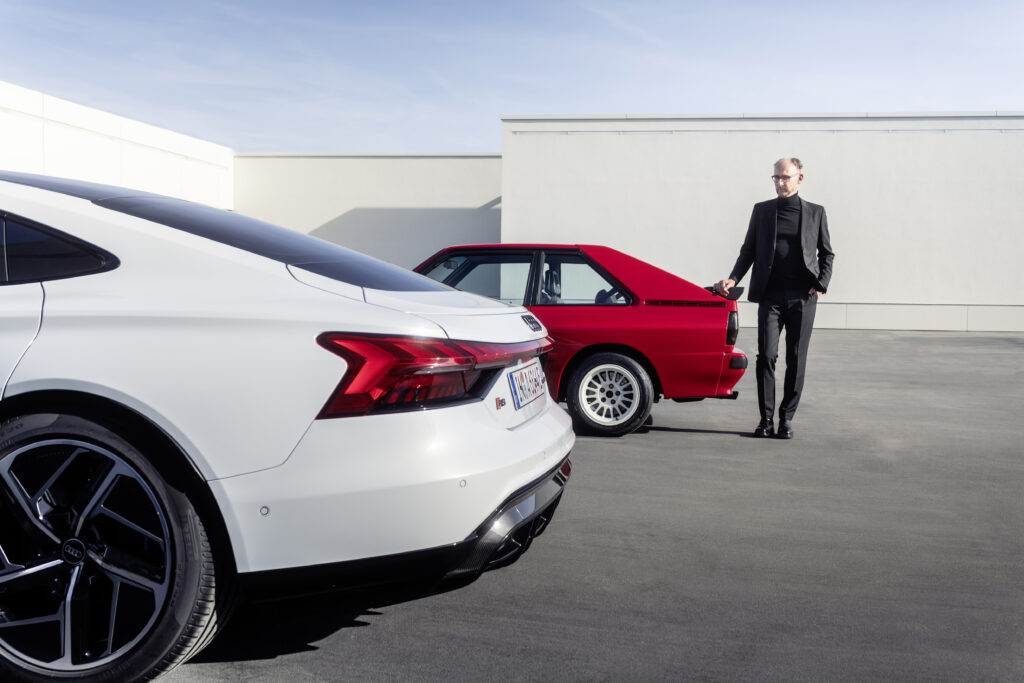
A story is a success when innovation turns into a tradition?
Lichte: Exactly! Today, in front of me on my desk, the Sport quattro and the RS e-tron GT1 sit precisely side by side. The RS e-tron GT has many elements that my team and I adapted from the Sport quattro during the design process. This electric Gran Turismo forges strong links into Audi’s history, and for me, in its iconography, is the Audi Sport quattro as I saw it for the first time forty years ago – transferred into a new, electric age. Consequently, tradition provides important impetus for the future.

Focusing precisely on that future: What type of design would customers wish Audi Sport GmbH to give to the vehicles it develops for tomorrow and day after tomorrow?
Lichte: In the future, we’re going to mainly build cars using two platforms – the PPE (Premium Platform Electric) platform for electric vehicles and the PPC (Premium Platform Combustion) platform for vehicles with conventional powertrains. Based on that, we carefully considered how to continue developing our RS models, going forward. The main question we asked ourselves in that regard: How can we carry the RS genes our customers have been desiring and valuing so far from the IC engine to the electric age and inspire at least as much – or even totally new – enthusiasm with them?
The answer?
Lichte: Going forward, customers will continue desiring RS models to deliver performance, albeit always combined with functionality. That’s the kind of feedback we receive from our customers and fans in studies as well. I can totally understand that because it’s also the credo of good design. A beautiful form calls for functionality or else the whole thing’s for the birds. However, large track width has been and will continue to be by far the most important characteristic for our clientele. In other words, the brawny look that clearly distinguishes the RS models from their respective base models. The differentiation from the respective base will even increase in the future. Aside from higher performance, that’s what we attached the greatest value to in the development.
Are these visual differentiations also pacemakers for the timeless design that you’ve promoted and made a reality?
Lichte: For me, timeless design is always the baseline and the highest objective. That’s where the TT RS, which embodies exactly that, comes into play again. Radical reduction has caused this car to become an icon in recent decades. When every line has a purpose, you’ve done your job as a designer. Especially our sportiest Audi cars, alongside their progressiveness and modernity, must exude an air of timelessness – because through it we create longevity and universality. My aspiration is that every RS model, in a purely aesthetic sense, must fit any situation in life and any setting.
How can this apparent contradiction be overcome between design that appears to be modern and styling that retains its classic beauty even after a long time?
Lichte: That’s pretty much the greatest challenge you need to tackle as a designer and, by the way, no matter what industry you’re in. One way to achieve that for the design of RS models is by appropriately combining a wide track and large wheels in a form that creates fantastic proportions. Plus, by how the body surfaces are styled: without gimmicks, every line with a defined function. Regarding that aspect, future RS model generations are going to see even further reduction.
In the future, further optimizations of aerodynamics for greater range of electrified RS models will play a crucial role. How much is that going to change the design process?
Lichte: The design process of the Audi RS e-tron GT provides the answer. We literally shaped that car in the wind tunnel. During the design process for it I selected four 2D draft versions and told my team: take these to the wind tunnel and then we’ll put the one with the best drag coefficient into production. That’s exactly what we did because with an electric performance car range is the decisive criterion for our customers. You could also make its battery larger – and make the car heavier as a result – but that’s bad for its performance. So, more efficient aerodynamics for longer range is the solution. To achieve that, we keep tweaking it together with our aerodynamicists until there’s no more room for improvement. All-out meticulousness for all-out functionality.
The new design philosophy at Audi calls for designing vehicles from the inside toward the outside instead of from the outside toward the inside – which has been common practice in automotive engineering for about 130 years. To what extent does that apply also to the future models from Audi Sport GmbH?
Lichte: Before we create the first sketch, we ask ourselves: what do our customers wish to experience with and in the vehicle? That we understand the interior as the focal point forms an all-new process and that process of course also fully applies to our RS models. We’re already specifically working on the new RS interior and I can share with you that it radically differs from what people today are familiar with in an RS model with an IC engine. In other words, how the driver will be sitting, what the seats are going to look like, and how the entire ambience is perceived. There’ll be a new but still highly unique RS world in the interior. By the way, we designed this RS interior even before there was an interior concept for the base vehicle of this future model.
Sustainability, no doubt, plays an increasingly important role in interiors as well?
Lichte: For me, sustainability is primarily the result of reduction. In the future, the interior will be clearly more reduced, the partly recycled materials used and their styling create an impression of maximum quality and a warm atmosphere. In a nutshell, we’re reimagining that space from scratch.
A personal question addressed to you as a passionate sailor: Going forward, can more design concepts be transferred from high-performance sailboats to high-performance automobiles?
Lichte: I sail performance boats with carbon masts, carbon rudders, carbon sails. That does reveal a pattern (laughs). Carbon is also an important subject for our RS models with reference to lightweight design of the exterior and use of materials for the interior. While sailing I generate ideas that I subsequently translate into new designs for Audi as best I can. On water, there’s a different philosophy of traveling: no matter how attractive my destination may be the focus is on the journey itself. How can I apply that to the road? For me, an automobile must be visually so attractive and thrill me while driving it that the aspect of arriving almost becomes secondary. That’s the feeling I want to put into a tangible form for our customers.

